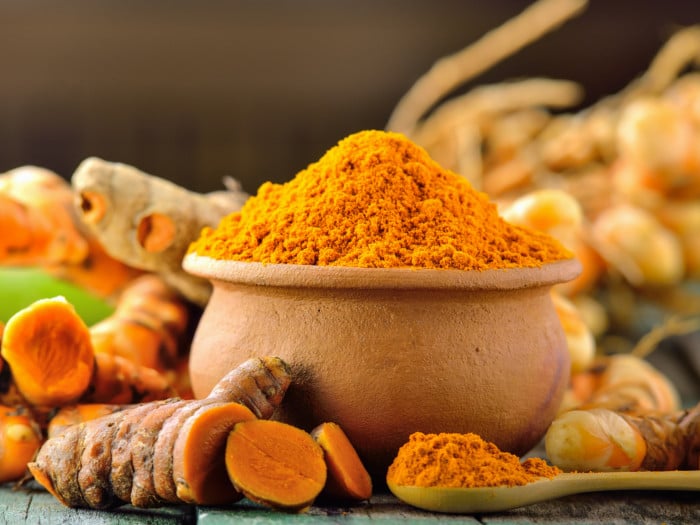There are different ways to take turmeric, which is important, given how powerful and beneficial this spice can be to your overall health. Turmeric is a perennial plant from the ginger family, and its most notable ingredient is curcumin, one of the most powerful antioxidants and anti-inflammatory compounds found in food. While this spice is commonly found in powdered form and is orange in color, there are many other ways you can add this impressive spice to your daily diet.
How to Take Turmeric?
If you are looking for new ways to take turmeric, try this spice in root form, or as a powder, tincture, supplement or tea. While the concentration may be different, most of the beneficial effects will be similar. [1]
Root Form
This form of turmeric can be used flexibly in many meals, in shaved or chopped form, both for flavor and for nutritive value. [2]

Turmeric has a plethora of skin benefits. Photo Credit: Shutterstock
Powder
This is the most common form you find turmeric in, and this powder is used as a spice for soups, stews, and curries, providing a tangy, spicy bite, as well as a healthy boost to any meal. [3]
Supplement
Due to the significant impact that turmeric can have on your system, many people choose to take concentrated supplements, which are available at the majority of health food and import stores. [4]
Tea
You can use turmeric powder or root to brew a powerful and flavorful tea. For people with gastrointestinal, respiratory or inflammatory problems, this is a very popular daily addition to their diet. [5]
Tincture
This is a highly concentrated form of turmeric that is typically administered in the mouth, in a smoothie, or mixed with water. This tincture is made by immersing it in alcohol, and should, therefore, be used sparingly. [6]
Turmeric Dosage
While turmeric is clearly a beneficial spice, it should still be consumed in moderation. In high concentrations, the active ingredients in it can be dangerous. The appropriate dosage will depend partially on your weight and metabolic level, as well as on the ways to take turmeric that you choose. [7]
- Root – 1.5-3 grams per day
- Powder Supplement – 1,500 milligrams of turmeric powder per day (on average)
- Tincture – 60-120 drops per day, broken up into 4 daily doses
- Tea – No more than 1/2 ounce of turmeric brewed in hot water per day
Turmeric Side Effects
There are some side effects if you consume an excessive amount of this spice, such as a higher risk of kidney stones, digestive issues, and allergic reactions. When consumed in moderation, however, turmeric rarely has any side effects.
- Kidney Stones – Since turmeric is known to contain a moderate level of oxalate, it can contribute to the development of kidney stones when consumed in very high concentrations. [8]
- Digestion – If you take more than twice the daily recommendation, constipation, bloating, flatulence, and cramping may occur.
- Allergies – Although allergies to turmeric are rare but if you consume it in high levels, it is possible to experience headaches and nausea, as well as topical skin inflammation.
